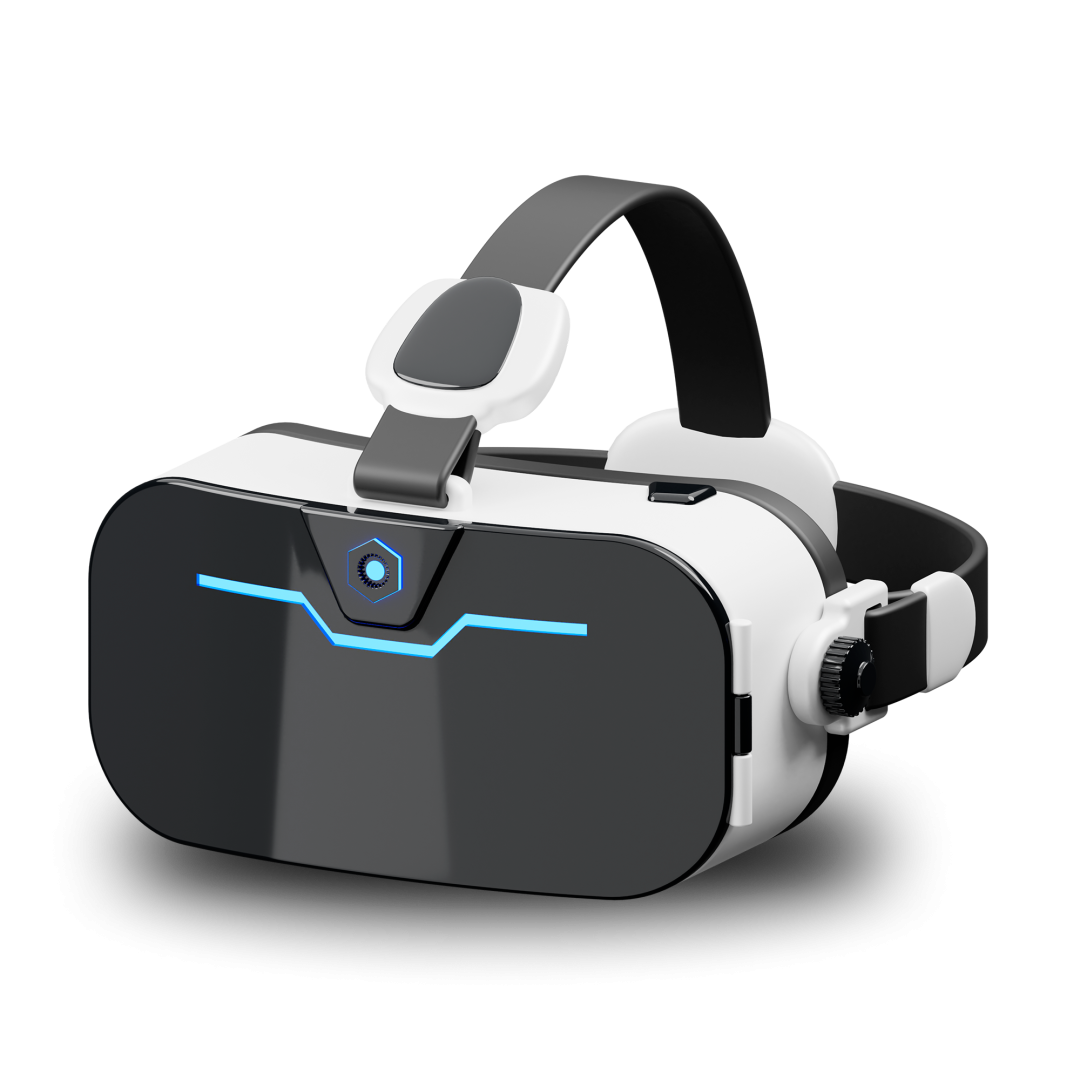What is Immersive Learning?
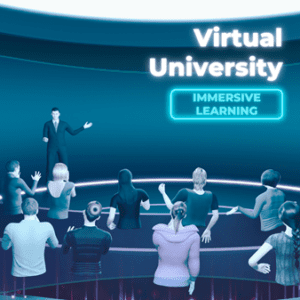
There are several definitions of what is immersive learning. Training Industry defines it as the activity that “places individuals in an interactive learning environment, either physically or virtually, to replicate possible scenarios or to teach particular skills or techniques.” Roundtable Learning states that “immersive learning utilises augmented, simulated, or purely artificial environments for learners to experience scenarios and simulations.” Accenture says that immersive learning is “an advanced form of active learning, uses technology to create fully simulated environments where learners interact with the experience—as close to the ‘real world’ as you can get.”
One or the other, a few key elements characterise immersive learning i: it provides the opportunity to practice and apply skills in a different environment that plunges the learner into 3D augmented or virtual environments. Immersive learning is used in various disciplines: history, anthropology, medicine, business education, arts and design, etc.
This revolutionary technology uses several tools, among which the most popular are:
- virtual reality, i.e. an artificial environment, fully immersive, where learners can pick up and move objects or interact with virtual characters. In this kind of experience, the learner excludes the real world and is fully enclosed in digital stimuli (Repetto et al., 2021).
- augmented reality, i.e. the technology of dealing via individual headsets with virtual objects placed in the real world.
- 360° videos, i.e. the technique of capturing scenarios with a 360° camera, plunging the learner equipped with VR headsets into a training environment he can manage thanks to the mouse or finger on the touch screen devices; this technology helps teach soft skills like communication, management, etc.
What are the Benefits of Immersive Learning
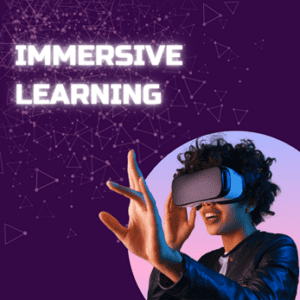
Like all breakthrough technologies, immersive learning has its advantages and its downsides. The focus here is on the three main advantages that make it possible to fill certain gaps specific to traditional instructional methods.
First, one of the issues of the traditional online course is the low retention rate. Immersive technologies allow the creation of entertaining content which keeps learners engaged in the classroom. Actually, immersive learning requires 100% of the learner’s thinking capacity. That is why, thanks to this technology, the retention rate increases to 75% (BigThink+).
Second, this technology enables the removal of the learner from his physical context which is often a source of disruption. In this way, the technology-enabled course offers an exceptional return on investment for both students and teachers, with increased learning effectiveness of 76% over traditional learning methods (BigThink+).
Third, the technology makes it possible to carry out simulations of dangerous situations without putting the student in physical danger. In other words, a Safe Learning Area is built through immersive learning. For example, when taught about the perils of a fire in the workplace and the safety standards to follow, immersive learning is the least dangerous technology and educational tool.
Read more on the pedagogical benefits of immersive learning here.
Immersive Learning in Higher Education
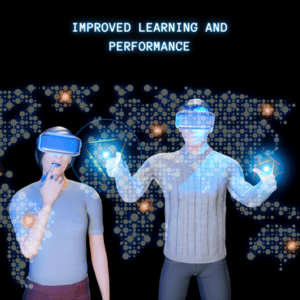 Immersive learning has an amazing transformative potential for the higher education sector. Experiential learning empowers students to be active agents of change in society’s journey to a better technology-enabled academia fostering imagination, creativity and sought-after practical skills. The digital shift towards online learning and the digitalisation of academia, accelerated by the Covid-19 pandemic, highlight the importance and timeliness of adopting new media enhancing contemporary teaching methods. The technical capabilities of technology-enabled classrooms, the usability of immersive learning solutions and the development of supporting infrastructure are becoming increasingly popular, used by many universities in different fields of study across the globe.
Immersive learning has an amazing transformative potential for the higher education sector. Experiential learning empowers students to be active agents of change in society’s journey to a better technology-enabled academia fostering imagination, creativity and sought-after practical skills. The digital shift towards online learning and the digitalisation of academia, accelerated by the Covid-19 pandemic, highlight the importance and timeliness of adopting new media enhancing contemporary teaching methods. The technical capabilities of technology-enabled classrooms, the usability of immersive learning solutions and the development of supporting infrastructure are becoming increasingly popular, used by many universities in different fields of study across the globe.
Immersive learning technology creates ample opportunity for students to find themselves in real-life scenarios, interact in virtual space in a variety of social settings and translate theoretical aspects of social sciences (knowledge of legislation, business principles, cognitive models, etc.) in real world applications. Students in the medicine and biotechnology fields get access to extensive 3D visualisations of internal organs and neural networks, virtual labs, as well as real-time simulations used in medical procedures and surgery. Immersive learning in different field of engineering offers realistic simulations, robotics labs and urban planning simulators. Students in arts and humanities get access to virtually reconstructed collections of world heritage sites and artworks, and realistic scenarios of major historical events. Finally, other immersive learning applications developed for general use can be successfully applied in higher education settings, including the Unimersiv virtual language exchange app for Oculus Rift, the Boulevard V museum tours app and HistoryMaker VR developed for interactive history learning.
Case studies
The Future of Immersive Learning
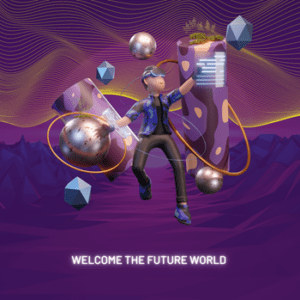 Immersive learning has great potential to continuously improve learning experiences in education and in the professional world. Since the combined VR and AR sectors are predicted to generate up to $1.5 trillion increase in global GDP by 2030 (PWC 2019), the adoption of immersive learning technologies in most fields of human activity is a clear forward direction of development.
Immersive learning has great potential to continuously improve learning experiences in education and in the professional world. Since the combined VR and AR sectors are predicted to generate up to $1.5 trillion increase in global GDP by 2030 (PWC 2019), the adoption of immersive learning technologies in most fields of human activity is a clear forward direction of development.
The Covid-19 pandemic has already pushed secondary and higher education towards digitalisation and developing a better-adapted and inclusive e-learning environment, believed to create a permanent shift to technology-improved classrooms (Fauzi 2022). While AR and VR have been used more in STEM teaching, recent project initiatives like the EU’s HEI Initiative and faculty development projects across the globe support teaching in social sciences, arts and humanities, also expected to increase the use of immersive technologies in the near future.
Moreover, technology – a driver of development – becomes indispensable when used as an educational tool for course design and delivery, contributing to an improved future of learning (Papageorgiou and Kokshagina 2022). The use of gamification, AI and AR/VR will assist a future generation of learners to achieve their employment goals in a fast-paced world. According to Pereira, Fishman and Rowe (2022), the adoption of AI in digital learning is forecasted to revolutionise education over the next decade, reflecting major generational and societal changes. Understanding these changes while actively engaging new technologies in building a strong curriculum based on existing teaching practices (McMahon and Walker 2019) is the projected direction for higher education globally.
Ultimately, the educational element of immersive learning allows for multisectorial and diversified applications deemed to be suitable for habitual use outside schools and academia. For instance, training in organisations is shifting towards adopting immersive technologies, particularly because the overall costs of using them is expected to go down in the future (Upadhyay and Khandelwal 2022). These aspects clearly show that immersive learning presents exciting future opportunities for students and professionals alike.
